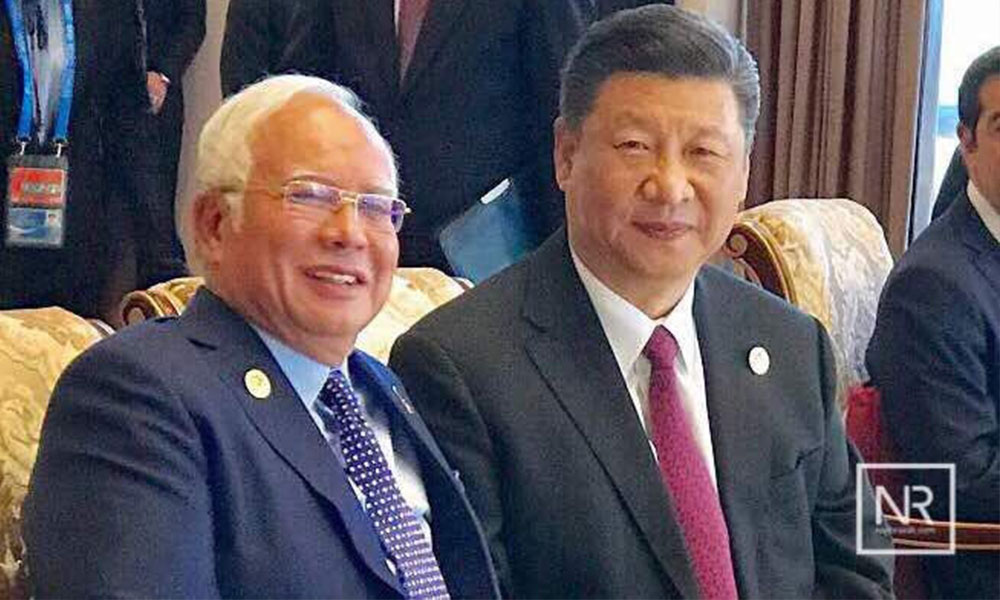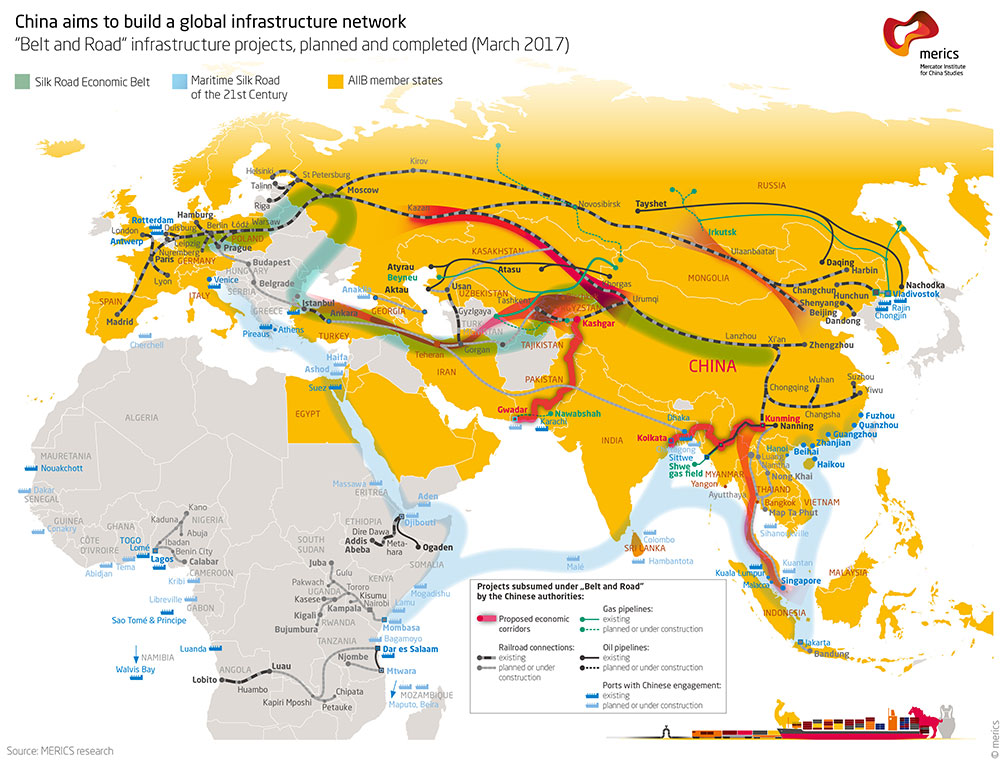
A QUESTION OF BUSINESS | The problem with one belt, one road (OBOR) is that all roads and belts lead to China and therefore it is little more than a thinly disguised grand design to ensure Chinese hegemony over all of Asia, including some of the less developed countries on the fringes of Europe.
It is not some benevolent project to benefit most of Asia and parts of Europe, but a plan using Chinese financial muscle and prowess in infrastructure development and manufacturing to make nations - many of them run by incompetent, corrupt leaderships - economically and financially dependent on China.
The plan will be one which showcases the more friendly face of China to the developing world after the ugly posturing in the South China Sea where it made artificial islands to bolster its military presence, openly and defiantly threatening other countries which had claims in the same areas.
But many leaders of some 65 countries which lie in the area covered by OBOR are salivating at the prospect of multibillion dollar projects into their country, seduced by all the attendant opportunities for money-making it entails through easy financing, over-pricing, corruption and patronage. It is manna from the Heavenly Kingdom!
Some like Malaysia and the Philippines, which had in the past criticised China heavily for its militaristic adventures, have seen the enticing light that money shines, substantially muting their rhetoric, now welcoming China openly as the saviour of economic growth and development.
But like all other superpowers, China has its own agenda of expanding its sphere of influence and well-being which are quite incongruent with the needs of developing countries along this belt and road. With the political leadership of these countries, including Malaysia, more interested in lining their own already fat pockets and ameliorating their own problems instead of bringing long-term benefit to their respective countries, China will exploit this corruption Achilles’ heel to the hilt like all the superpowers before it.
What and where is OBOR?
Some use the belt and road initiative, or BRI, to mean the same thing. The map gives a pretty good idea. It is a revival of the old overland silk route from China through West Asia into Europe via road and rail links, making more use and expanding rail links to Europe via Siberia, and a modern twist on the centuries old maritime route, but of course through the Suez Canal to Europe.

Confusingly, the belt is the Silk Road Economic Belt where the road is which includes countries like Kyrgyzstan, Tajikistan, Iran, Georgia and Turkey, and the road is the grandiose-sounding “Maritime Silk Road of the 21st Century” - in effect existing maritime sea routes. But China attempts to provide connectivity between ports, road and rail and pipelines as well, all of course improving connectivity with China.
If you want to know more about China’s official concept of what is OBOR, look at this propaganda-ish video from China Daily. But if you want something more informative and substantive, go to this article on OBOR.
A massive US$5 trillion
An example of connectivity is the port of Gwadar in Pakistan to be developed with Chinese aid, read financing. From there it is envisaged that goods can move into and out of China via the proposed Pakistan economic corridor. Another example is the high-speed rail link between Malaysia and Singapore which is being billed as one which will eventually connect to Kunming in China.
Apart from the Silk Road Economic Belt, others include one each for Kazakhstan, Pakistan and Mongolia, one for Burma/Bangladesh and one for Southeast Asia.
Who builds the infrastructure, estimated at a massive US$5 trillion eventually? The countries where they are located but with access to Chinese funding - China has pledged additional funding of US$113 billion for this at the recently concluded belt and road forum in Beijing held mid-month.
But who will finance these expensive projects? China of course, under very generous terms which will have very low interest rates and even delayed payment - up to seven years in some cases. The leaders who sign for these, while benefiting from all the money-making opportunities now, may not be in power when the time comes to repay. And who knows what state the countries will be in then? Ask Sri Lanka, now said to be saddled with ports who nobody wants to use.
And who will build all these infrastructure projects? Why, the Chinese, of course. Do you think for one moment that they will provide the financing and let someone else do the constructing? Chinese companies will undertake these projects and Chinese workers may actually build them - look at Forest City in Malaysia, ask the Kenyans about their highways.
Who will pay for it? The countries where the infrastructure is of course - eventually. If they can’t, they will have to give up their assets to China - the pawning of their assets is taking place right now.
How will they recover the costs? Hopefully, if the infrastructure is well used, people pay for its use, and if it brings a great amount of development, it may well be worth it. But all these are great big “ifs”. The world is littered with infrastructure insufficiently used. Anyone remember our RM30 billion double-tracking rail project?
And where are the feasibility studies for projects of this size, and the environmental impact studies? Or are these totally irrelevant because someone is willing to finance them?
And so, China lends us the money to build the infrastructure to link us with them and uses their companies and perhaps even their labour to build them, in the process making a tidy sum from it. If the project fails, it shrugs its shoulders, looks askance, and asks about what assets you have or what advantage you can give them to square things off. Good deal for China, bad deal for the rest of us.
And there you have it - economic diplomacy on a plate.
At the end of the day, all roads need not lead to China, some yes. There is a whole lot of world out there and small countries should keep all their options open and not close off a lot of them by building too many of them to one country.
This is the old story of the kijang and the sangkancil - read smaller nations - being smart and nimble, avoiding the crush as the elephants - read superpowers - fight for territorial and other influences.
And be truly smart, some projects will be beneficial, a lot simply won’t and will result in a debt and other bondage to China. Ultimately, think carefully about whether there will be a benefit and when. What are all the other things you could be doing with the money - the opportunity cost.
And most importantly, think about what motivates China. Ever wondered why Singapore is lukewarm to OBOR and still leans towards the US for security?
P GUNASEGARAM says that Malaysia is definitely a kijang or a kancil, but not a smart one right now. E-mail: t.p.guna@gmail.com.- Mkini


No comments:
Post a Comment
Note: Only a member of this blog may post a comment.